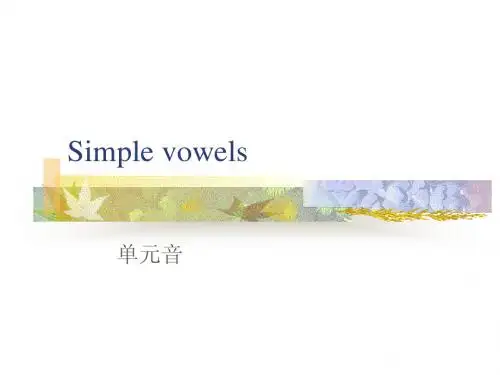vowels简介讲义
- 格式:pdf
- 大小:62.22 KB
- 文档页数:2
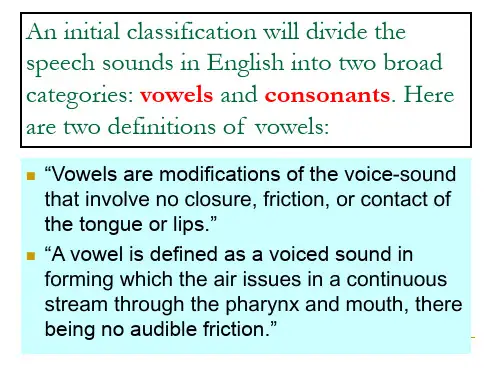
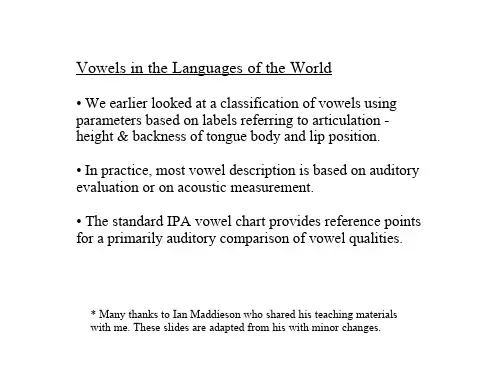
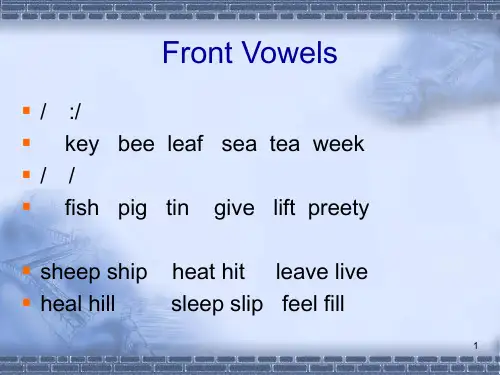

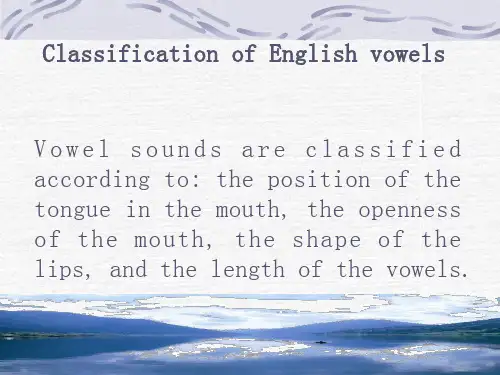
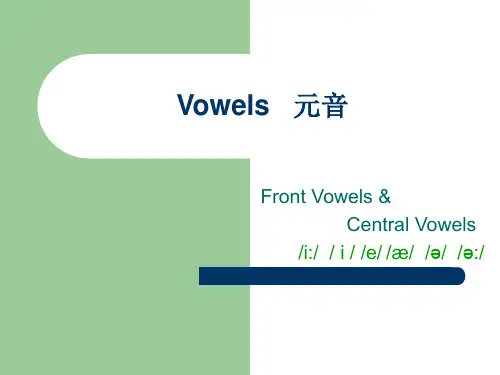
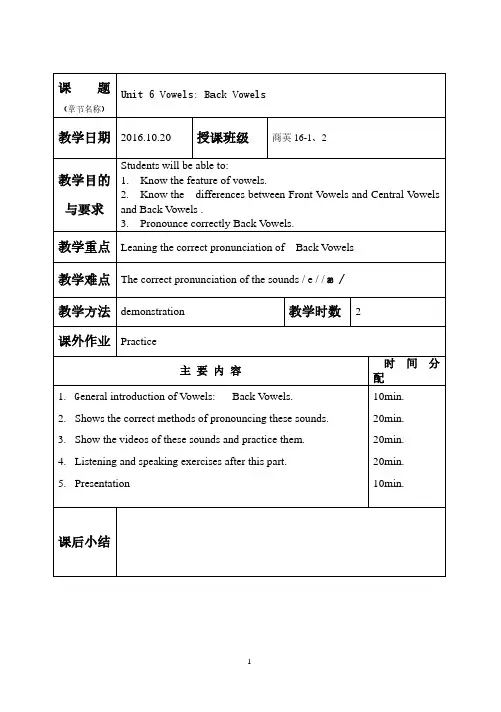
详细教学内容I.General introduction of Back vowelsIn this unit, we will learn the back vowels in English.There are six back vowels in English. Looking at the 舌位图, you’ll know why they are called back vowels.(The following is the description of the six English back vowels.) They are produced by shifted the body of the tongue back from its central position.II. Shows the correct methods of pronouncing these sounds./ u: /, /u / are both high, back, rounded vowels. The /u:/ marks the highest boundary for the back vowels, as /i:/ does for the front vowels. Therefore, the tongue is retracted from its rest position and raised toward the soft palate. This vowel is quite common in the languages of the world and appears without problem in most Chinese learners. 英语中最小的圆唇音,不要用力将嘴唇撅得老高loose food blue groupno moodbring food to schoolprove to be truerumor about the movie star/u / foot cook could goods开口比/ u: /大点Compare / u: / with / u /book a roomput in some sugarpull throughwalk through the woodsTo ensure correct pronunciation, it is important to make the following distinction between /u:/ and/ u /:1.the part of the tongue raised for / u / is not as back and as high as that for/u:/;2./u:/ has quite strong lip rounding while the lips are only slightly rounded for/u /./ ɔ:/, /ɔ /is a mid-back vowel. For its production, the tongue is retracted and almost flat in the mouth. The vowel is almost fully back and has quite strong lip-rounding. //ɔ / / is a low vowel. The lips are slightly rounded. /ɔ / is a difficult vowel for the Chinese learners. Many of them use a shortened version of/ ɔ:/as its substitution. To ensure correct pronunciation, it is important to make the following distinction between these two vowels:1./ɔ / is a low vowel while / :/ is a mid vowel, so the mouth is more open for /ɔ /,2./ ɔ:/ has quite strong lip rounding while the lips are only slightly rounded for /ɔ //ɒ /在发音时口的开张度大于/ ɔ:/,牙床近乎全开。
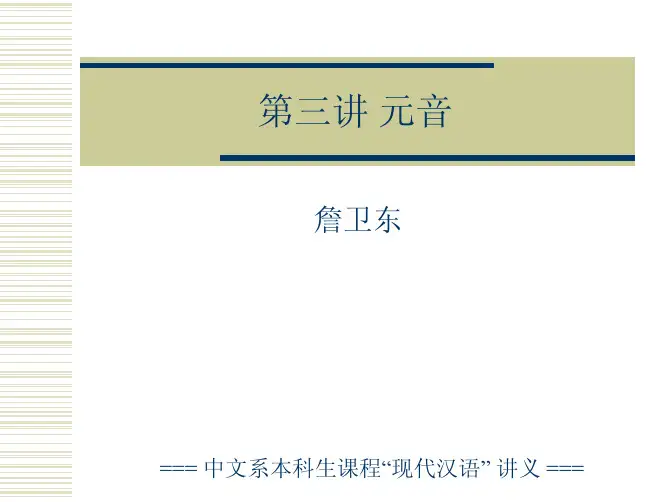
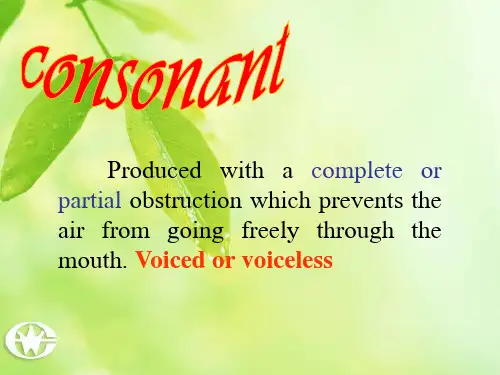

理论精讲-语言学 1理论精讲-语言学1(讲义)题量1-4题Part1语言学概述1.语言学的分类2.语言的本质特征3.语言的主要功能01语言学的分类02语言的本质特征(Design features)语言的本质特性,指的是人类固有的,有别于任何其他动物交流系统的特质。
任意性二重性创造性位移性变化传播性交换性1.任意性任意性(Arbitrariness)是指语言符号的形式与所表示的意义没有天然的联系。
teacher(English)せんせい(Japanese)老师(Chinese)(叫啥都可以)2.二重性3.创造性4.移位性5.文化传播性6.互换性1.任意性2.二重性二重性(duality)二重性指语言在结构上存在两个层次:低层次:c-o-f-f-e-e高层次:coffee有读音有意义补充:递归性(Recursiveness)无限制地反复利用相同的规则They don't know that we know they know....3.创造性4.移位性5.文化传播性6.互换性1.任意性2.二重性3.创造性能产性/创造性(Productivity/Creativity)词语通过新的使用方法能表达新的意思,并能立刻被没有遇到过这种用法的人所理解。
①ungelievable不给力的②She bought a book which was written by a teacher who taught in a school which was known for its graduates who...4.移位性5.文化传播性6.互换性1.任意性2.二重性3.创造性4.移位性移位性(Displacement)人类语言可以谈论到时间上(time)和空间上(space)并不可及的物体、时间或观点。
孔子、Shakespeare5.文化传播性6.互换性1.任意性2.二重性3.创造性4.移位性5.文化传播性文化的传习性(Cultural transmission√)是指人类语言依靠文化或习俗传统得以代代相传(from generation togeneration),而不是靠遗传延续。
